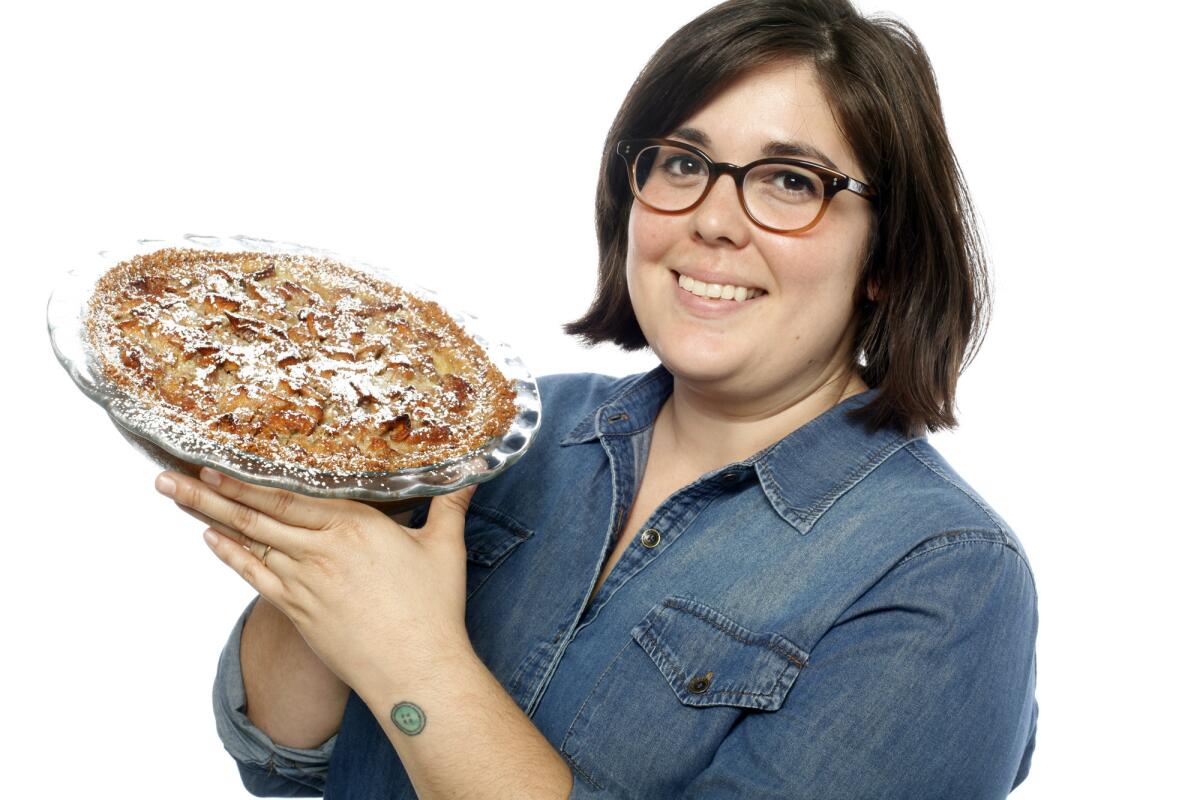Buy This Now: Apples, with 12 recipes

The arguments begin almost as soon as the first apple is harvested every year. Which variety is best? Problem is, the question’s impossible to answer.
That’s because the question is so complicated. To choose the best apple requires a matrix of information — variety, certainly, but also how it was grown and where, when it was harvested and how long ago and what you’re going to use it for. And even more basic — what kind of apple do you like?
When it comes to common varieties, Granny Smith, Jonathan, McIntosh and Pippin are among the tartest apples. Fuji, Gala, Golden Delicious and Jonathan are the most buttery. If you want a bit of spice, buy Galas or Braeburns.
When it comes to cooking apples, the big choice is between fruit that will break down (for dishes like applesauce and apple butter), or fruit that will remain whole (for pies, etc.). For the former, choose apples such as McIntosh, Jonagold and Rome Beauty. For that perfect pie, you’ll want Granny Smith, Gala, Fuji and Golden Delicious, in roughly descending order of firmness.
All of this is complicated by two more factors — where the apple was grown and how long ago it was picked.
Some of the best apples I’ve ever eaten (crisp, tart, spicy and juicy) are Pink Ladies grown in the Cuyama Valley. But I’ve had the same variety grown other places that were flat and uninteresting.
And some apples store better than others. Two of the main varieties in California’s early season are Gala and Fuji. Both can be really good apples, but the Gala needs to be eaten within a couple of weeks of harvest, while the Fuji will last much longer.
Of course, the best solution to the problem is to go to the farmers market and ask for the farmer’s recommendation.
How to choose: Because apples vary so much in color and shape, there are few hard and fast rules to selecting the best. In general, look for apples that are smooth-skinned, deeply colored and glossy.
How to store: Apples should be stored as cold as possible. Keep them in the bottom drawer of the refrigerator. A perforated plastic bag works best, as it allows some of the moisture to escape while keeping the apples crisp.
Are you a food geek? Follow me on Twitter @russ_parsons1
ALSO:
Here’s what’s in season right now
VIDEO: How do you clean a pomegranate?
Amazon promises farmers market produce at your doorstep
More to Read
Eat your way across L.A.
Get our weekly Tasting Notes newsletter for reviews, news and more.
You may occasionally receive promotional content from the Los Angeles Times.











